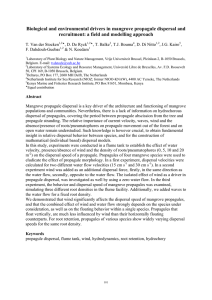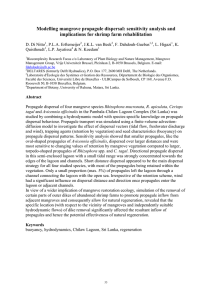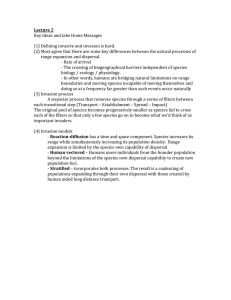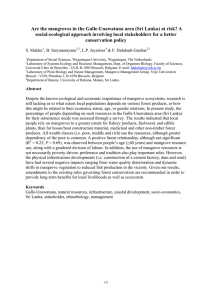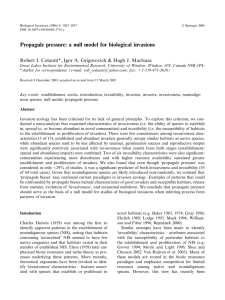The propagule dispersal black box - driving factors and complexities:... review T. Van der Stocken , D.J.R. De Ryck
advertisement
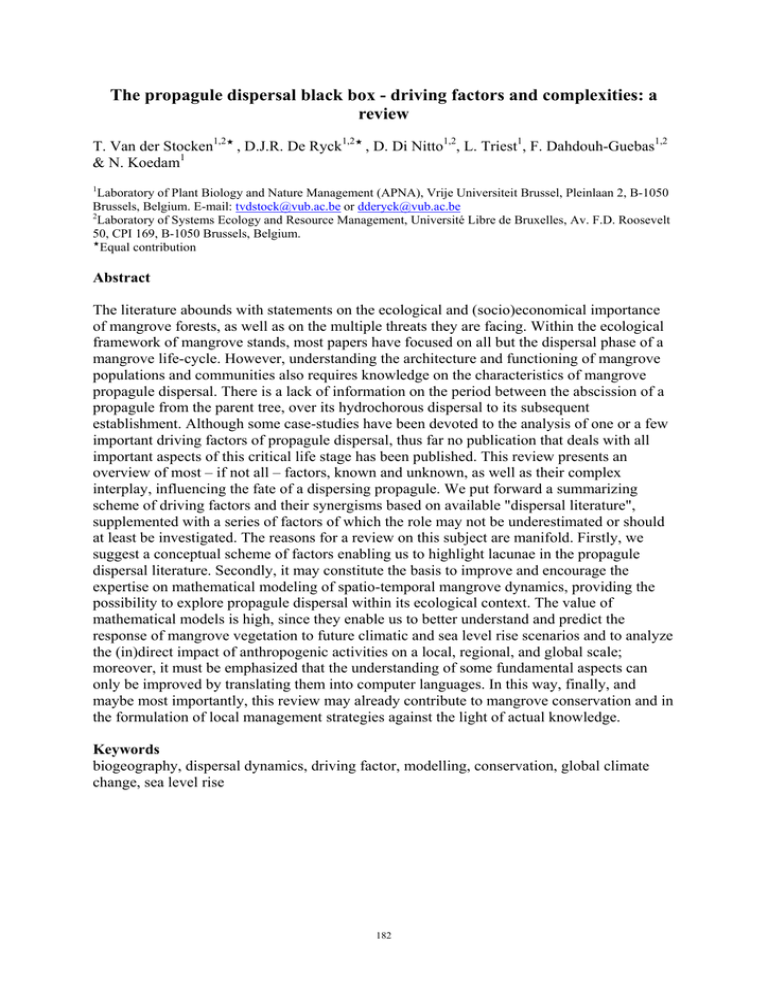
The propagule dispersal black box - driving factors and complexities: a review T. Van der Stocken1,2 , D.J.R. De Ryck1,2 , D. Di Nitto1,2, L. Triest1, F. Dahdouh-Guebas1,2 & N. Koedam1 1 Laboratory of Plant Biology and Nature Management (APNA), Vrije Universiteit Brussel, Pleinlaan 2, B-1050 Brussels, Belgium. E-mail: tvdstock@vub.ac.be or dderyck@vub.ac.be 2 Laboratory of Systems Ecology and Resource Management, Université Libre de Bruxelles, Av. F.D. Roosevelt 50, CPI 169, B-1050 Brussels, Belgium. Equal contribution Abstract The literature abounds with statements on the ecological and (socio)economical importance of mangrove forests, as well as on the multiple threats they are facing. Within the ecological framework of mangrove stands, most papers have focused on all but the dispersal phase of a mangrove life-cycle. However, understanding the architecture and functioning of mangrove populations and communities also requires knowledge on the characteristics of mangrove propagule dispersal. There is a lack of information on the period between the abscission of a propagule from the parent tree, over its hydrochorous dispersal to its subsequent establishment. Although some case-studies have been devoted to the analysis of one or a few important driving factors of propagule dispersal, thus far no publication that deals with all important aspects of this critical life stage has been published. This review presents an overview of most – if not all – factors, known and unknown, as well as their complex interplay, influencing the fate of a dispersing propagule. We put forward a summarizing scheme of driving factors and their synergisms based on available "dispersal literature", supplemented with a series of factors of which the role may not be underestimated or should at least be investigated. The reasons for a review on this subject are manifold. Firstly, we suggest a conceptual scheme of factors enabling us to highlight lacunae in the propagule dispersal literature. Secondly, it may constitute the basis to improve and encourage the expertise on mathematical modeling of spatio-temporal mangrove dynamics, providing the possibility to explore propagule dispersal within its ecological context. The value of mathematical models is high, since they enable us to better understand and predict the response of mangrove vegetation to future climatic and sea level rise scenarios and to analyze the (in)direct impact of anthropogenic activities on a local, regional, and global scale; moreover, it must be emphasized that the understanding of some fundamental aspects can only be improved by translating them into computer languages. In this way, finally, and maybe most importantly, this review may already contribute to mangrove conservation and in the formulation of local management strategies against the light of actual knowledge. Keywords biogeography, dispersal dynamics, driving factor, modelling, conservation, global climate change, sea level rise 182

